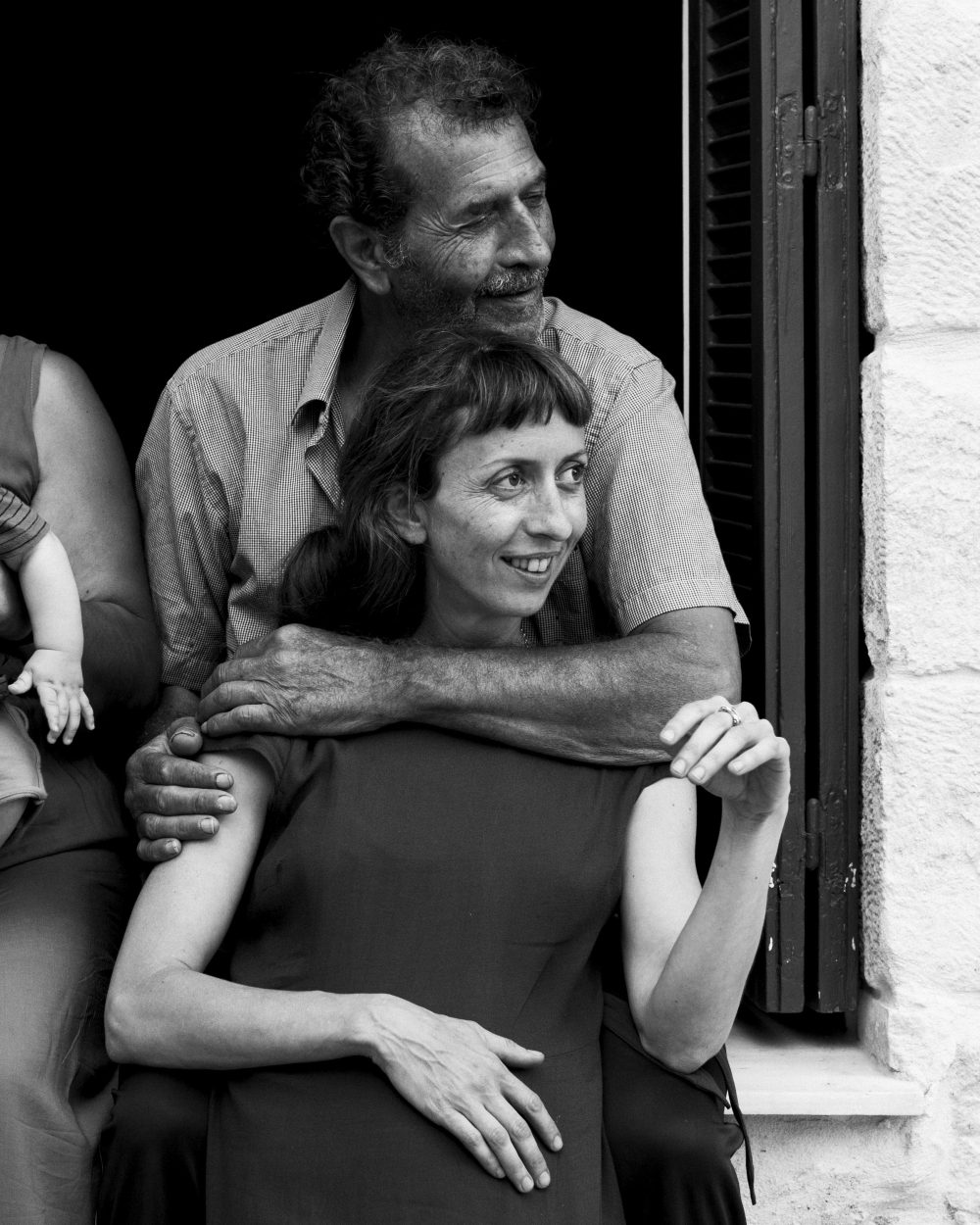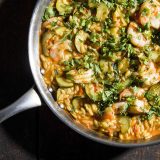
Marianna Leivaditaki's Ode to Crete: Fish Soup and Deep-Sea Monsters
Listen now on Milk Street Radio
Past the almond and fig trees on the north coast of Crete, past the natural caves where the resistance hid during World War II, the road narrows and ends at a marina overlooked by a tiny white and blue Orthodox church. Here was the nucleus of Marianna Leivaditaki’s childhood, where the wooden deck of her family’s seaside taverna nearly touched the water. Where she and her two siblings worked every day since before they can remember.
“I was allowed to clean fish, but I couldn’t reach the sink because I was so tiny,” says Leivaditaki, author of "Aegean," a collection of recipes and touching personal stories that evoke sun-dappled summers and the fresh catch brought in each morning by her fisherman father. “My dad would put me on a chair with those domestic rubber gloves up to my shoulders and a knife to gut the fish.” The front of the house was run by her Scottish mother. Once the children came back from playing in the mornings, they got to work—peeling potatoes, tying fish hooks to the line, busing tables, running food to customers, and more, sometimes until 3 or 4 in the morning. “When I was young obviously I couldn’t last, so when the time came I would just take a stack of tablecloths, put two chairs together and sleep,” Leivaditaki says, fondly recalling the soothing murmur of chattering regulars. “Then when two [chairs] wasn’t enough, I would do three, and later I needed a fourth.”
She left at 17 to study in England, completing a master’s degree in forensic psychology, but it was the farmers market that really called to her. Before long she was back in the kitchen, rising to head chef of the acclaimed Mediterranean restaurant Morito in London.
“Aegean” is as much a paean to Leivaditaki’s childhood as it is a flexible mixture of traditional Greek island cooking and techniques, as well as ingredients picked up in the 20 years since she left. One recipe in particular, her prawns with orzo, ouzo and mint, takes common Greek ingredients but treats them as they never would have in a taverna.
“Orzo is a big thing in Greece and Crete, but usually you have it with meat in the oven, with tomatoes, spices and slow-cooked lamb,” she says. “The food I love has come from my past, but has changed with the present, so nothing is a 100 percent authentic recipe.”
Besides pairing orzo with less traditional shellfish, she also borrows from Italy by treating the rice-shaped pasta like risotto, adding in stages a homemade broth built from the prawn shells. Doing so coaxes starches from the pasta to thicken and emulsify the broth into a loose, creamy sauce, while the pasta absorbs the rich flavors of the shellfish stock and simmering vegetables.
To make the broth, Leivaditaki dries the prawn shells on a baking sheet in the oven, a step that concentrates their flavor. She then cooks the toasted shells with fennel, celery, onion, red bell pepper, bay, saffron, white wine and a hearty pour of brandy. Once water is added, the mixture simmers for 30 minutes, creating a rich infusion.

In “Aegean,” Marianna Leivaditaki details life with her fisherman father.
As the broth cools, she toasts the orzo in butter in a skillet, caramelizing and deepening its flavor. Zucchini, tomatoes and fennel seeds are added and cooked over relatively high heat before she adds the stock. A splash of anise-rich ouzo highlights the fennel, while lemon and orange zest brighten and balance the sweetness. The pasta itself takes less than 15 minutes, and the prawns are mixed in only at the end to prevent them from turning rubbery.
We found Leivaditaki’s way of treating orzo as risotto to be revelatory, though we substituted more readily available shrimp for the less common prawns (a closely related but distinct shellfish). We also seared the shells in the stockpot to avoid using a third pan in the oven.
But we otherwise were faithful to her method, adding the broth in stages and cooking the orzo over relatively high heat in order to release the pasta’s starch, a key step to achieving the dish’s signature creamy consistency. The rich sweetness of brandy amplified the shrimp flavor, and finishing the dish with lemon zest, mint and ouzo offered bright punctuations to a delicious dish firmly rooted in Leivaditaki’s upbringing. A dish that, happily, also is entirely weeknight-friendly.
“It’s important to show people that tasty food can either be done quickly or slowly,” she says. “If you haven’t got much time, you can still create an amazing dish.”




